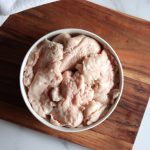How to Render Goose Fat
Rendering goose fat may take some time, but the results are well worth it. Whether you use it for crispy potatoes, sautéing vegetables, or adding depth to stocks, goose fat is a valuable addition to your kitchen repertoire.
Servings: 48 Servings (3 to 4 cups)
Ingredients
- 2 1/2 lbs fat and skin from a 12 lb goose including visceral, neck, and tail fat
- 1 cup water
Instructions
- Separate the fat from the goose, removing any skin and connective tissue. Chop the fat into small pieces to help it render more efficiently.
- Place the chopped fat in a heavy-bottomed pan or Dutch oven. Add 1 cup of water and set the pan over low heat.
- Allow the fat to simmer, stirring occasionally. The water will slowly evaporate, and the fat will begin to render out.
- Once the water has evaporated and the fat has fully melted, the cracklings will start to brown. Remove these crispy bits for snacking or use in other dishes.
- Strain the rendered fat through a fine-mesh sieve into a clean jar or container. Allow the fat to cool and solidify before storing in the refrigerator. The fat will keep for up to 3 months.
Notes
If you don’t have goose fat, duck fat is a great alternative for many of the same uses. Chicken fat, also known as schmaltz, is rendered in the same way.
Rendered goose fat can be stored in an airtight container in the refrigerator for up to 3 months, or frozen for longer storage.
Nutrition
Calories: 213kcal | Fat: 24g | Saturated Fat: 7g | Polyunsaturated Fat: 3g | Monounsaturated Fat: 13g | Cholesterol: 24mg | Sodium: 0.2mg | Calcium: 0.1mg
